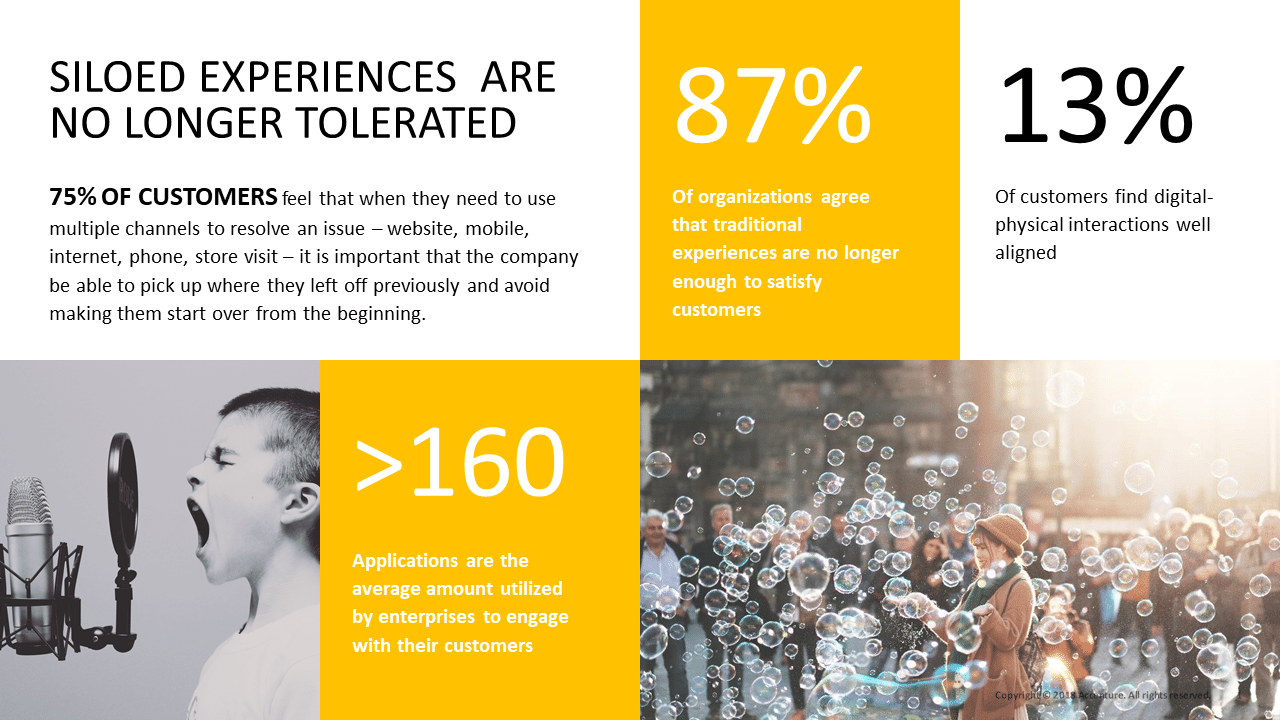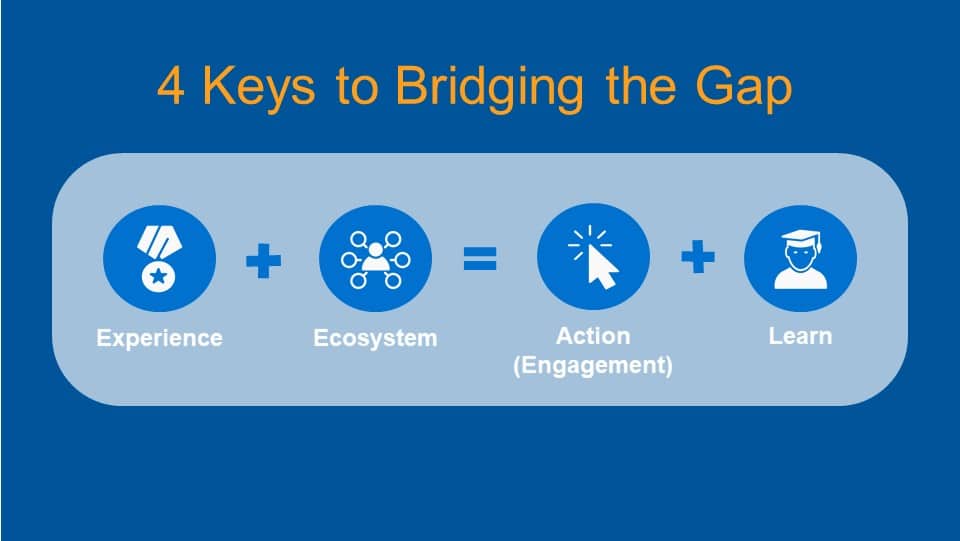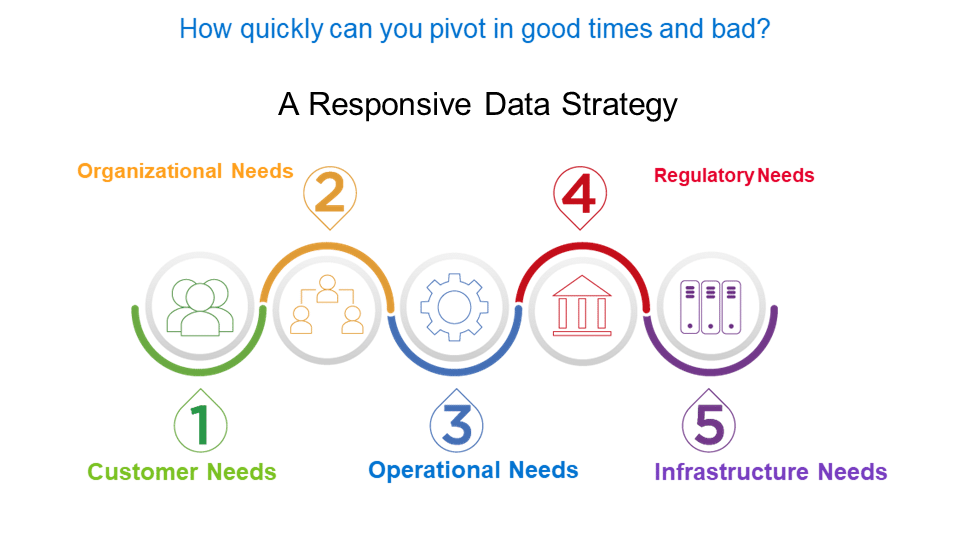The Need for Real-Time Customer Data is Exploding

Q&A with Rob Fuller of Accenture Interactive
In May 2020, I sat down with Rob Fuller, Customer Data Orchestration Practice Lead at Accenture Interactive, for a conversation about a timely topic: Customer Experience. At seven weeks into the COVID-19 pandemic, where shelter in place was mandated in many communities and all-but-essential businesses shut their doors, the stakes to keep connected with customers could not be higher.
In a Q&A format, Rob shares the key trends, strategies, and advice for companies looking to connect with customers for deep, memorable, and lasting connections. Based on his 20 years of experience building digital solutions and his recent work innovating with some of the world’s largest brands on customer experience solutions, Rob’s insights are prescient.
Jakki: What impact has COVID-19 had on your clients’ digital transformation initiatives focused on customer experience?
Rob: We are seeing a wide variety of responses to the global pandemic. Here is the spectrum of actions companies are taking:
- Steady as you go. For companies where customer experience transformation initiatives are mission-critical, the leadership teams are continuing and, in some situations, accelerating digital transformation.
- Full steam ahead. For other companies, the pandemic caught them flat-footed. Without a solid customer experience program implemented, the leaders are scrambling to pull it together. But they are also facing an impact on earnings, so budgets can be constrained.
- Wait and see. For some leaders — whose businesses have been hit hard or are in a complete shutdown — immediate survival is top of mind. Recovery plans center around adapting to new ways to establish a safe connection with customers.
Jakki: What are some recent findings about the disconnected customer experience from Accenture Interactive Research?
Rob: The biggest issue is that organizations tend to think they have done better than what consumers believe, in terms of how good their customer experience is and how cohesive it is.
We found that only 13 percent of customers find digital and physical interactions well aligned. So, 87% of customers feel that going from digital to in-store or to other sales-based interactions is disconnected. It is really a tough statistic when you think about how critical those interactions are to build engagement, loyalty and trust.
Another key statistic is the average enterprise uses over 160 applications to engage with their customers. The more systems involved, the more opportunity for these disconnects to happen.

Jakki: How have the needs for customer data changed in the last five years?
Rob: We are seeing the continued convergence of customer data that was starting five years ago. Some industries have accelerated this convergence. There is a need for real-time customer data, making sure that customer data is at scale, and that that data is integrated into all the different experiences that that customer might have.
Factors to consider:
- Is the data fit for how it is needed?
- What is the level of accuracy needed for different functions – marketing, sales, service, or finance?
- Do we have the right to use that data with GDPR, CCPA, and other privacy laws?
- Is the data compliant for regulated industries like financial services, life sciences, and healthcare?
So, the two biggest changes in data requirements are the need for real-time customer data and data fit-for-purpose. There are also needs for customer preferences, transactions, interactions, and 3rd party data-powered customer profiles.
In addition, creating a “single view of the customer” (SVOC) has expanded to include resolving identity and having the schema-less data come along with it to serve different purposes. So, it is important to have the right rules in place to start with a SVOC, but also having the ability to provide a contextual view of that customer data, based on different business needs is important too.
“The need for real-time customer data at scale and data fit-for-purpose is exploding. The ability to integrate different sources of data is fueling the convergence of customer data.”
– Rob Fuller, Customer Data Orchestration Practice Lead, Accenture Interactive
Jakki: Five years ago, everyone was solving the customer data challenge with MDM systems. Why aren’t these legacy MDM solutions suitable these days?
Rob: Legacy systems were built in a world where projects moved at a snail’s pace. Matching data across different sources for financial reporting or marketing campaigns were planned months in advance. Today, customer expectations are skyrocketing. The underlying problem of how you match data and leverage that data has not changed, but what has changed is the need for speed and scale. Today you ask:
- How do I match data in real-time?
- How do I leverage the relationships revealed in the data?
- How do I couple data and relationships to the actual experience points?
- How do I use the data in real-time?
- How do we start to process some of that engagement data?
Ultimately, the tangible return on investment for driving better customer experiences — both in terms of efficiency and effectiveness — is using the data more quickly in real-time use cases.
Jakki: We’ve identified that disconnected data leads to a disconnected customer experience. Can you dig into what is the root cause of the disconnect?
Rob: The most important person in the customer experience equation is the customer. And that person is not in the C-suite. That person is not fully represented in the boardroom. That is the first big disconnect.
Fragmented by different priorities and siloed systems, the disconnects or gaps naturally start in the organizations themselves. Sales is focused on CRM applications. Operations use their service cloud and marketing uses various marketing tools. How can companies truly put the customer at the center of the business if the customer data is just fragmented everywhere? Disconnected organizations, disconnected applications, disconnected data, they all contribute to customer experience gaps.
The customer experience has shifted. This challenging time has forced us to think about different ways of engaging the customer and the new ways of being empathetic to the customer.
“How can companies truly put the customer at the center of the business if the customer data is just fragmented everywhere? Disconnected organizations, disconnected applications, disconnected data, they all contribute to customer experience gaps.”
– Rob Fuller, Customer Data Orchestration Practice Lead, Accenture Interactive
Jakki: What are the four keys to bridging the disconnected customer experience gaps?
Rob: It was great to collaborate with Reltio for this model as a balanced equation – Experience + Ecosystem = Action + Learn
- Experience. Think about what the ultimate experience would be the customer could have with you. For that, consider leveraging your data and analytics experts to find the gaps in that process. Where do you see people drop off? Where do you have the least visibility of customers? From there, look at efficiency and those drop-offs for your quick-win ROI. Using that baseline information, we can plan improvements to the overall experience.
- Ecosystem. The average enterprise has 160 applications used to manage customer engagement. You have got to think about what is integrated, what is the data quality, and how can we make sure we are integrating with agility and protecting ourselves from the future. Consider how to be responsive to things happening in the world, swapping tools, adding additional applications or channels, and repositioning your business to take advantage of new opportunities in the market.
- Action. For the balancing act, we must focus on the engagement itself. Leveraging what we know about that customer to layer in personalization, where can we make their experience better, where can we differentiate that experience for them and help them achieve what they are trying to do.
- Learn. We can use that engagement and action to learn more about customers. To give them choices and interpret those choices to try to decide what they need. I do not think that the idea should be to hyper-personalize everything all the time but focus on how we can make the experience better through personalization and ensure engagement is relevant.

Jakki: Particularly in times of uncertainty, being able to have a data strategy that responds quickly to changing customer needs and expectations is critical. What do data leaders need to consider in their responsive data strategy?
Rob: A responsive data strategy looks at these five factors needs for delivering a real-time customer experience at scale:
- Customer needs
- Organizational needs
- Operational needs
- Regulatory needs
- Infrastructure needs
The two major areas I see room for improvement are the slew of data silos and a lot of legacy systems. If we identify and prioritize our gaps, then we can create even more responsive customer experiences. And that really starts with the C-suite. First, focus on getting the voice of the customer in the C-suite, prioritize, plan the next steps, and align the organization. Get quick wins that drive business value, apply key learnings, and continue to innovate.

Learn More
This blog highlights some of the key insights from the Disconnected Customer Experience: Bridging the Gap blog series co-authored by Rob and Jakki. Watch the 30-minute webinar. Read the other two blogs.
Blog #1: 4 Keys to Architecting The Connected Customer Experience
